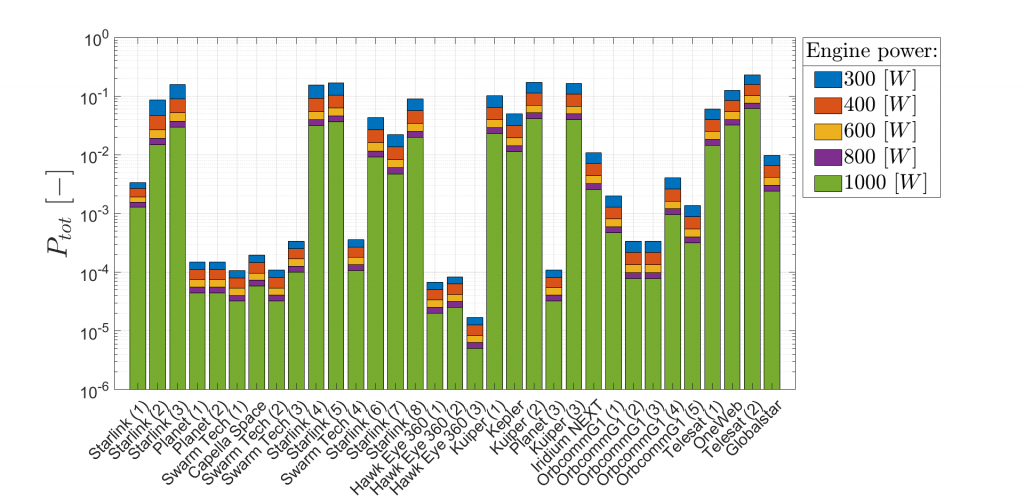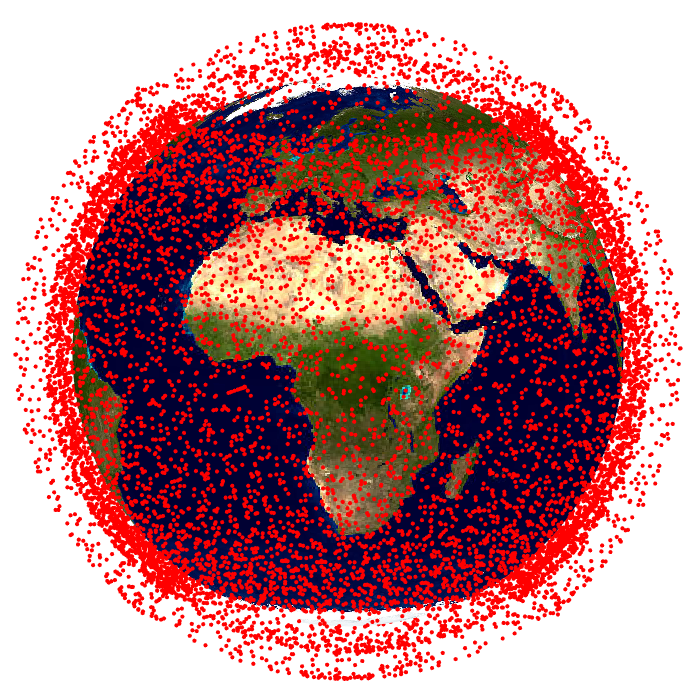In the next decade, the space sector will undergo a considerable change as the current development of satellite constellations will quintuple the number of active satellites. While these constellations will enable new and better space-based services, from data connectivity to Earth monitoring, they also will pose new challenges regarding space traffic management, generating the demand for more powerful and accurate tools. These tools shall cover a wide range of activities, from the tracking of satellites from Earth, to the assessment of the collision risks and the design and implementation of collision avoidance manoeuvres when this risk becomes too high. In this context, a statistical model for the evaluation of the collision probability related to crossing a shell of constellation satellites been developed. Such an event involves a de-orbiting or injecting spacecraft which must cross the thin region of space populated by the satellites of a constellation.
The evaluation of the collision probability is performed without propagating the satellites, thus making the method very efficient and suitable for analysing large sets of data.

The method will be presented by our Eduardo Maria Polli at the Stardust-R Global Virtual Workshop II on September 14 at 11:20, along with some results related to the replacement of constellation satellites and an analysis of the effects of an in-orbit catastrophic collision on satellite constellation. You can find more information about the workshop on the following link.
The Global Virtual Workshop II – Stardust-R (stardust-network.eu)

